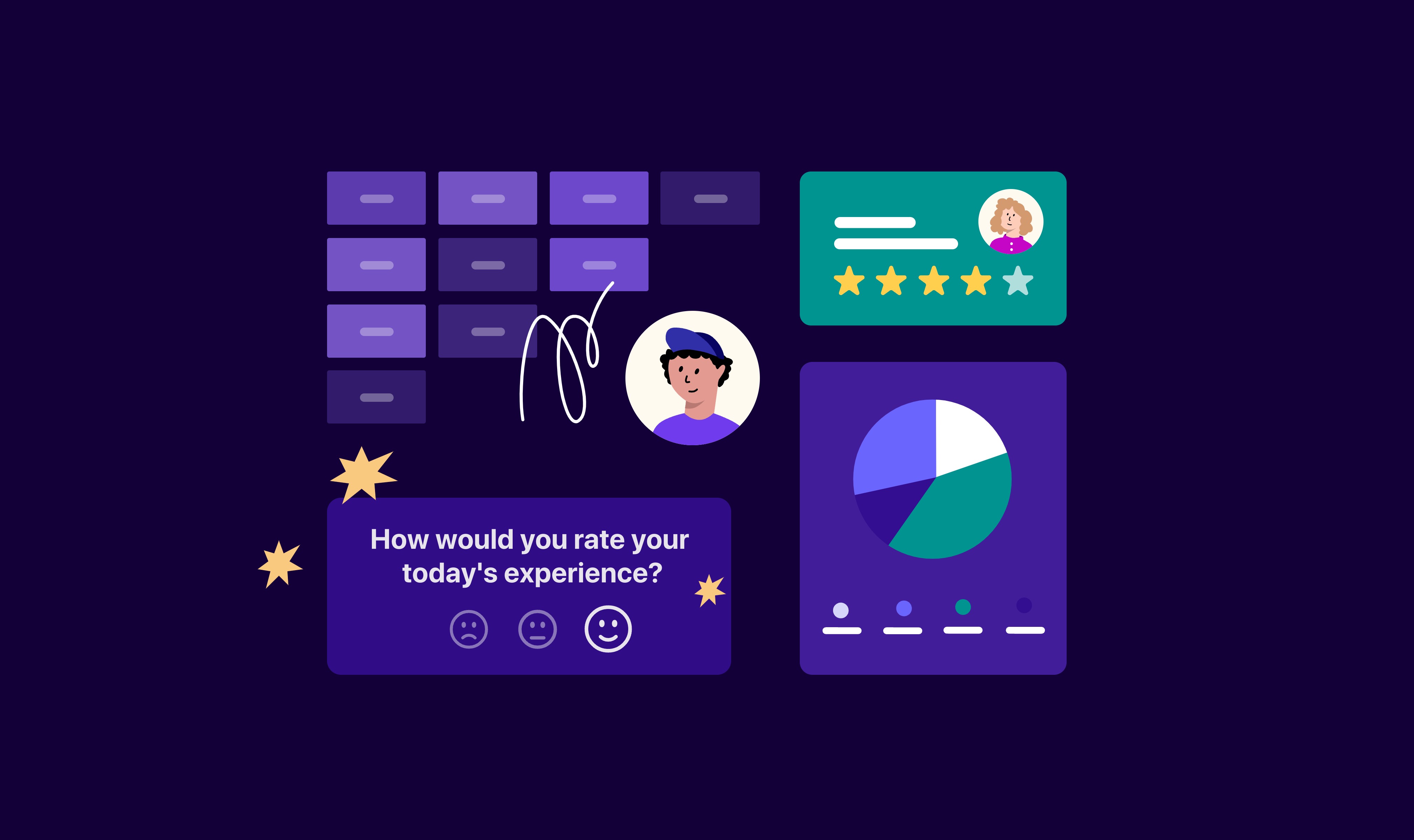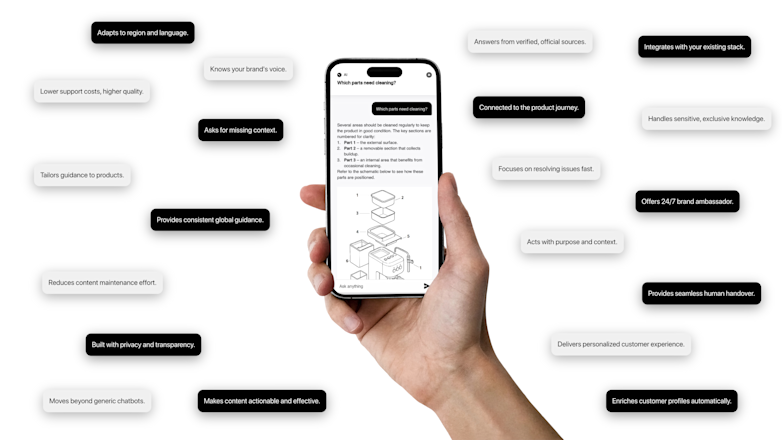
Customer feedback is the lifeblood of any thriving business. With it, you will grow and learn how to serve your customers better.
Also, by requesting consumer feedback, you give them a sense that their opinions are actually valued. Making customers feel heard, will create a foundation for a long-lasting trust relationship. Satisfied customers will also tell others about their great experiences, which could result in future sales.
But how do we go about collecting that feedback? What should you look for, and why is it so important? This article will discuss the importance of customer feedback, how to collect it effectively, and how you can leverage tech solutions such as Layerise to collect insightful feedback about your customers.
What is customer feedback?
Customer feedback refers to the information provided by customers about their experience with your brand and products. It includes comments, issues, insights, and opinions your customer base shares through customer satisfaction surveys, polls, views, complaints, and compliments. Customer feedback can be either positive or negative (both are important to your business).
You can collect six types of customer feedback:
Customer satisfaction feedback: This feedback is about how much satisfaction the customers get from your products, services, and any other interaction with your brand. It includes functional and emotional metrics and asks questions such as “how do you feel about this product/service?”.
Sales feedback: Sales feedback allows customers to share their experience with your sales process, including the sales team. It helps to improve sales rep training and leadership so you can connect better with your prospects and leads.
Customer support feedback: This is similar to sales feedback. The only difference is that it focuses on your customer service team instead of the sales team. Customer support feedback is critical to improving your post sale experience.
Customer loyalty metrics: This type of customer feedback tells you how loyal the customers are to your brand and the likelihood of them recommending it to other buyers.
Customer preference feedback: Customer preference feedback tells you what products or services your customers prefer. They can either be your products or your competitors. That helps improve your product positioning so you can target your customers better.
Demographic information: Some businesses don’t consider this as feedback, but demographic information helps improve customer service, marketing, and sales strategies. Demographic information such as gender, location, level of education, and marital status helps build the buyer persona

By gathering and analyzing customer feedback, you can find out which aspects of your business are working well and which may require improvement.
Customer feedback provides the basis for customer experience improvement and can catalyze positive change for your business. They are crucial to making data-driven business decisions to improve your customer relations.
Why it's crucial to collect customer feedback
According to a PwC Future of Customer Experience report, 32% of consumers will leave a business after a negative experience. Furthermore, 52% of American consumers feel that companies must improve customer experience.
But how would you know this if you don’t collect customer feedback? How would you know how to improve your customer experience?
If you don’t know what you’re doing right, you can’t offer your customers more. And, at the same time, you can't know where to improve if your customers don’t tell you what you’re doing wrong. Customer feedback is a fundamental pillar of success for your business. Here are a few reasons you should collect customer feedback:
1. Customer feedback helps you measure customer satisfaction
Customer satisfaction and loyalty are crucial to your long-term financial performance. It helps in customer retention, leading to lower customer acquisition costs, higher customer lifetime value, increased revenue generation, and a larger market share.
The best way to determine if your customers are satisfied with your products and services is by asking them. Customer satisfaction feedback can help determine their satisfaction with your brand and products.
2. Customer feedback helps improve products and services
Market research can help to get an idea of how potential customers feel about your products and brand. But feedback from customers who have used your products and interacted with the brand will help you learn about your strengths and flaws. Customers with experience will give you the most insightful feedback.
Even if market research can give you a lot of data, it will never be able to keep up with the changing needs and expectations of customers. Customer insights will always be more valuable than professional knowledge.
3. An opportunity to improve your customer experience
Consumers no longer buy just the product. They buy the experience. 58% of customers will pay more for better customer service. By how much? The report by PwC says they would be willing to pay up to 16% more for products if your customer experience is exceptional.
Additionally, 63% of consumers would allow you to collect their data for more personalized, customized experiences if you provide excellent customer service.
Therefore, clients will stay loyal to your brand if you focus on providing the best customer experience at every touchpoint. Ask them what you’re doing well so you can keep doing it and learn what you need to improve.
4. Show customers that you value their opinions and input
Listening to the voice of your customers is one of the most effective ways to improve your customer relations. Simply asking your customers for feedback show them their input and opinions are essential to your company. When you involve them in shaping your business, they will likely feel more attached to your brand and become loyal customers. You gain valuable brand ambassadors and advocates.
We’re sure you know the power of word-of-mouth advertising. 93% of consumers trust brand recommendations from family and friends.
Additionally, you’ll reduce your customer churn rates if you allow the customers to air their satisfaction (and dissatisfaction) with your brand.
5. Improve customer retention
A satisfied customer will stay with your business. Unhappy ones will move to your competitors. 83% of customers say they would be loyal to a brand that responds to and resolves their complaints.
Now you see how significant customer feedback is. It will help you determine your customers' satisfaction and the areas you need to work on. It allows you to win back customers and get repeat purchases.
Investing in new customers is five to 25 times more expensive than retaining existing ones. So use customer feedback wisely to improve customer support and increase customer retention rates.
6. It’s a reliable source of information for other customers
Besides family and friends, consumers also rely on reviews from other buyers to make purchasing decisions. Advertising and social media marketing are consumers' least trusted sources of information about brands and services.
Opinions provided by customers who’ve already used your products can influence others to also buy from you. So you must collect customer feedback and make it accessible to other customers, especially opinions and reviews. Providing social proof can go a long way in boosting your marketing efforts.
7. Making informed and data-driven business decisions
In the highly-competitive eCommerce market, there’s no place for making decisions based on wild guesses. One slight misstep can quickly destroy what’s taken years to build. Successful enterprises make business decisions based on insightful data and credible information. This way, they can adjust their products and customer relations strategy to fit customer needs.
Customer feedback is one of the most reliable sources of insightful data you need to make business decisions. It will help you to have a profound understanding of your customer base and allocate resources where a return on investment is guaranteed. Start collecting customer feedback today to stay on top of trends.
8. Five ways to collect feedback from your customers
You now know why collecting customer feedback from your clients is essential. How do you collect it?
Before we discuss how to collect customer feedback, it’s important to note you should first identify why you’re collecting the feedback. Outlining your goals sets the groundwork for an efficient process worthy of everyone’s time - yours and the customers. You work with a clear goal in mind. Without a clear intention, your feedback may not serve you any good.
Some of the questions you should ask before collecting customer feedback are:
Which specific aspect of the customer journey would you like to improve?
What’s your plan for the data you’ll collect? How will you act on it?
Which customer feedback channel works best for your goals? Which type of customer feedback should you collect?
Now, let’s focus on the most popular methods for gathering customer feedback:
1. Customer feedback surveys
First, you can request feedback directly from your customers through surveys. One of the benefits of customer feedback surveys is that you can collect both qualitative and quantitative feedback simultaneously. It’s also a proactive approach that gives you better insights than waiting for complaints.
There are different types of surveys you can use to collect customer feedback. The most common ones include:
Voice of the Customer (VoC) surveys
Net Promoter Score (NPS) surveys
Customer Satisfaction Score (CSAT) surveys
Customer Effort Score (CES) surveys
2. Customer feedback forms
Surveys are usually conducted periodically. But customers shouldn’t wait for your survey schedule to be able to give feedback. Customer feedback forms can help customers provide feedback throughout the year at their convenience.
You can incorporate customer feedback forms into your business, including:
Email customer feedback forms
Mail-in customer feedback forms
Website/ in-app feedback forms
3. Customer interviews
The disadvantage of the first two methods of customer feedback collection is that they’re primarily one-way communication. It’s often difficult to follow up or request more customer information. Customer interviews can help to overcome this challenge.
Customer interviews provide an avenue for a deeper dialogue between your brand and the customer. You get to narrow down specific issues they’d like addressed regarding your brand or products and look at them exhaustively.
When conducting customer interviews, you can talk to:
A random sampling of customers to get across-the-board feedback.
A focus group of dissatisfied customers to find out how you can improve their experience.
A group of happy customers to learn what aspects of your customer experience you should build on.
A specific demographic of customers (age, income levels, geographic area, etc.) that you want to focus your customer relations strategy on.
Customer interviews also allow you to follow up on the feedback provided through customer feedback and surveys.
4. Social listening
Many of your customers are already online. Most of them probably follow your brand online. If your customers are already engaging you on social media platforms, make it easy for them to provide feedback through those channels.
Platforms such as LinkedIn, Twitter, and Instagram offer polling functionalities that you can leverage to collect customer feedback. You can also collect feedback from their comments and private messages in the inbox. Even if your customers aren’t engaging you directly, they are talking about you online. Use social listening tools to find out what they are saying.
5. Usability tests
Usability tests enable you to uncover challenges before your broader customer base does proactively. They give you actionable insights to improve the customer experience before customers complain. You can also use them to refine product designs and features.
One company that’s been able to leverage usability tests to gather customer feedback is Google through its User Experience Research. It even rewards participants who take part in the research.
Usability tests aren’t only restricted to eCommerce businesses. For example, if you operate a gym, you can enlist your clients to test out a given package and collect their feedback about the features offered in the package. It’s also a way of upselling your premium packages.
How Layerise can help you collect feedback about your customers
Without customer feedback, you’ll never know if your customers are getting value from your products. Without knowing this, there’s likely to be a disconnection between the brand and its customers. Disconnection breeds disloyalty, leading to high customer churn rates and customer acquisition costs. In the long run, you’re likely to suffer reduced revenue generation.
It’s your responsibility to collect customer feedback and act on it. Layerise is a tool that’s useful in streamlining your customer feedback collection. It eases the feedback process for you and your customers and makes it easy for them to provide feedback.
Join thousands of businesses and customer relations managers who already enjoy using Layerise to collect customer feedback. Book a free demo now and learn more about how you can improve your customer feedback collection strategy with Layerise today.
Learn how to collect valuable insights on your customers to sell even more.

How to Turn a New Obligation into a Growth with Layerise

A trusted, brand-safe AI assistant that knows your products, your customers and your content.



